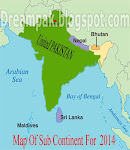The Federally Administered Tribal Areas (FATA) in Pakistan are areas bordering Afghanistan, outside the four provinces, comprising a region of some 27,220 km² (10,507 sq mi). The area has Afghanistan to the north-west, North-West Frontier Province (NWFP) to the east and Balochistan to the south. The area is colloquially referred to as Pakistan's Tribal Belt or Pak tribal belt.
The geographical arrangement of the seven Tribal Areas in order from north to south is: Bajaur, Mohmand, Khyber, Orakzai, Kurram, North Waziristan, South Waziristan. The geographical arrangement of the six Frontier Regions in order from north to south is: Peshawar, Kohat, Bannu, Lakki Marwat, Tank, Dera Ismael Khan.
Waziristan, a mountainous region of northwest Pakistan, bordering Afghanistan and covering some 11,585 km², is divided into two "agencies", North Waziristan and South Waziristan, with estimated populations of around 0.6 million and 0.8 million respectively.
South Waziristan is the southern part of Waziristan. It comprises the area west and southwest of Peshawar between the Tochi River to the north and the Gomal River to the south, forming part of Pakistan's Federally Administered Tribal Areas (FATA).
Waziristan is named after the Pashtun Wazir tribe. South Waziristan is the largest FATA in size. It has two headquarters: Tank is the winter headquarters of the Agency while Wana is its summer headquarters. Mullah Nazir has clout in this area presently. It has been functioning since 1895. It is bounded to the north by the North Waziristan Agency, to the north-east by Bannu and Lakki Marwat Districts, to the east by Tribal Area Adjoining Tank District and D.I. Khan Districts, to the south by Zhob District of Balochistan Province and Tribal Area Adjoining D.I. Khan District, and to the west by Afghanistan. The total area of the Agency is 6,619 km².
The Agency is mostly a mass of rugged and complex hills and ridges. There are no regular mountain alignments. The land rises gradually from south and east to north and west. The dominating range is the Preghal in the west along the border with Afghanistan. It is the highest peak which is 3,515 metres high. Zarmelan, Wana, Shakki, Zalai, Spin and Tiarza are the main plains of the Agency. The Mahsuds and Waziris are the two main tribes of this Agency. The Mahsud tribe inhabits the northern regions of South Waziristan near Razmak in North Waziristan.
North Waziristan is the northern part of Waziristan. It comprises the area west and south-west of Peshawar between the Tochi river to the north and the Gomal river to the south, forming part of Pakistan's Federally Administered Tribal Areas (FATA). Miran Shah is capital of North Waziristan.
It is bounded on the north by Afghanistan, Kurram Agency and Hangu District, on the east by Tribal Areas Adjoining Bannu District and Tribal Area Adjoining Karak and Bannu Districts. On the south by South Waziristan Agency and on the west also by Afghanistan. The total area of the agency is 4,707 square kilometres.
The chief tribes in North Waziristan are the Utmanzai Wazirs and Dawars. Militant Commander Hafiz Gul Bahadur has clout in this area presently. The North Waziristan Agency consists of three sub-divisions and nine Tehsils. The Miran Shah sub-division comprises the Miran Shah, Ghulam Khan, and Datta Khel tehsils. The Mir Ali sub-division contains the Mir Ali, Spinwam, and Shewa tehsils. The Razmak sub-division consists of the Razmak, Dossali, and Garyum tehsils.
South Waziristan has been a centre of militants and Jihadi Organizations for past 25 years. Security forces entered South Waziristan in July 2002 for the first time since 1947. The security forces first launched operation against foreign militants but widened its scope later as militants struck back. First peace agreement was made in April 2004 while second in February 2005 but both the agreements could not sustain and skirmishes continued surging. Suicide attacks on security forces’ convoys and check-posts also increased. The following groups have been active in South Waziristan: Baitullah Group, Mullah Nazir Group, Hafiz Gul Bahadur Group, Mullah Yaseen Group, Abu Qatada Group and Uzbek Group. According to security forces, many suicide bombers’ training centers are present in Mehsud area.
Dunya tv:
PAK ELECTRON LTD
14 years ago


